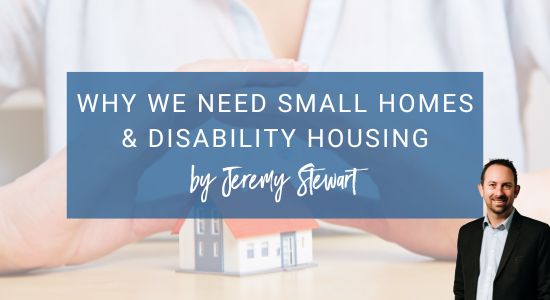Real estate comes in all forms and sizes. Majority of people looking want a 3 bedroom, 2 bathroom home or bigger being that the average household consists of a couple of kids these days. And they want room for friends and family to stay. However, there are a couple of sections of the market I feel are really missing and under supplied, which is the 1 and 2 bedroom homes ( not units or townhouses ) and disability housing.
When people think 1 and 2 bedroom dwellings, most people would think units in a complex with little to no land. And while they are sought after in some markets, not everyone wants to live in this style of property. Recently for example I had a 10-month-old built 2-bedroom, 1 bathroom property for sale. It was a very neat and tidy, well designed home with open living, high ceilings, single garage along with good sized bedrooms in a secure location and close to amenities. Within 3 days of it being on the market we had 4 offers ( 3 from sole occupants ) and multiple enquires. What that shows to me is that there is a very real need for these kind of properties for people that are on their own and want to downsize but not into a complex.
There is also a perception that this kind of product is for elderly people. Wrong! There is a younger demographic looking for an affordable first home and some that are just happy with the single life and don’t want to rent forever. For some developers it’s about lot yield and I get that, because it’s all about the numbers and return on investment, however I believe that you could still get a good return out of a product that appeals to people on their own.
And that then turns me onto the topic of disability housing. I’ve been doing real estate for some 20 years now and it’s fair to say, I’ve not come across many properties in Albany, even newer built homes that cater for disabilities. There is a large lack of supply for these kinds of properties. Serious thought and consideration needs to be put into design for ramps, wider doorways and passageways, handrails in wet areas, bigger than normal toilet areas and more practicable kitchens to manoeuvre around are just some examples in housing construction that could do with a nudge. And implementing those concepts would make it a whole lot easier not only for the occupant but for the carers that assist them. The demand for disability housing requirements is only going to increase as the population increases and people get older.
So, if you’re thinking of building an investment for the future, think about disability housing and smaller homes that aren’t matchboxes that allow for lifestyle. Because I’m sure if we put our mind to it, you’ll know someone within your immediate circle of networks that one day might need this kind of product.
By Jeremy Stewart – Director


